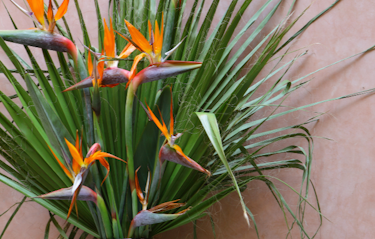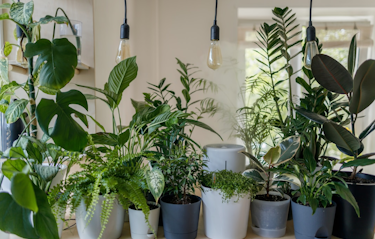
How To Trim Pothos
- Easy Care
- Araceae
- Large
- Evergreen Tropical Vines
We independently select everything we recommend. When you buy through our links, we may earn a commission.
The bird of paradise plant blooms in late winter to early spring. However, this plant rarely blooms as an indoor plant.
Published on 15 August, 2023 by Oliver Rouane-Williams
Also known by the common name, crane flower (botanical name Strelitzia reginae), there are many types of bird of paradise, including the white bird of paradise, giant bird of paradise, Strelitzia juncea (leafless bird of paradise). All are tropical plants native to warm places like South Africa with a long, hot growing season. This plant is frequently seen in landscaping in the state of Florida and US hardiness zones 10-12.
The bird of paradise plant rarely blooms indoors.
It requires very specific and consistent growing conditions to bloom, including year-round full sun in a south-facing window, warm temperatures, high humidity, and a regular watering schedule to keep its well-draining soil moist, but not wet.
Many people struggle to get their plants enough direct sunlight to bloom.
If you get lucky, your plant will bloom once a year in the later winter or early spring. The flower will last several weeks before dropping, after which you’ll need to cut the flower stalk back to promote new growth.
When the plant is not blooming, it experiences new leaf growth.

Bird of paradise plants bloom only after 3-4 years of maturity, even in the best conditions. Only mature plants will bloom, and there is no way to rush the process and get a young plant to bloom.

Age of Plant: Only mature plants bloom, whereas young new plants will not. Unless your bird of paradise houseplant is at least three years old you should not expect it to bloom.
Sunshine: Birds of paradise plants need plenty of direct sunshine to bloom. The bird of paradise plant needs at least six hours of bright light each day.
Watering: Overwatering can cause your bird of paradise not to flower. The surface of the soil should dry before watering, but it should be moist below the surface. Usually weekly watering is sufficient, but check the soil regularly. If your bird of paradise leaves are wilting or yellow, it could have root rot, which will stagnate blooming and eventually kill the plant.
Fertilization: Proper feeding will also encourage blooming. Try switching to a 10-30-10 fertilizer, which is high in phosphorus. It is particularly important to fertilize during the growing season.
Temperature: The bird of paradise plant does best in a warm climate with air temperatures between 60-85 degrees Fahrenheit. In winter months, a bird of paradise plant should not be kept outside if the temperature dips below 50 degrees Fahrenheit.
Humidity: Birds of paradise need a humid environment between 60-70% to bloom. Use a humidifier or pebble tray, or group other tropical plants together to increase respiration and humidity.
Proper Potting: A bird of paradise plant prefers to be slightly root bound, also known as pot bound, to encourage blooming. Even though many people feel the need to repot plants frequently, this particular plant does not need that, and disturbing the root ball can prevent blooming.
Delivered to your inbox every Saturday morning








